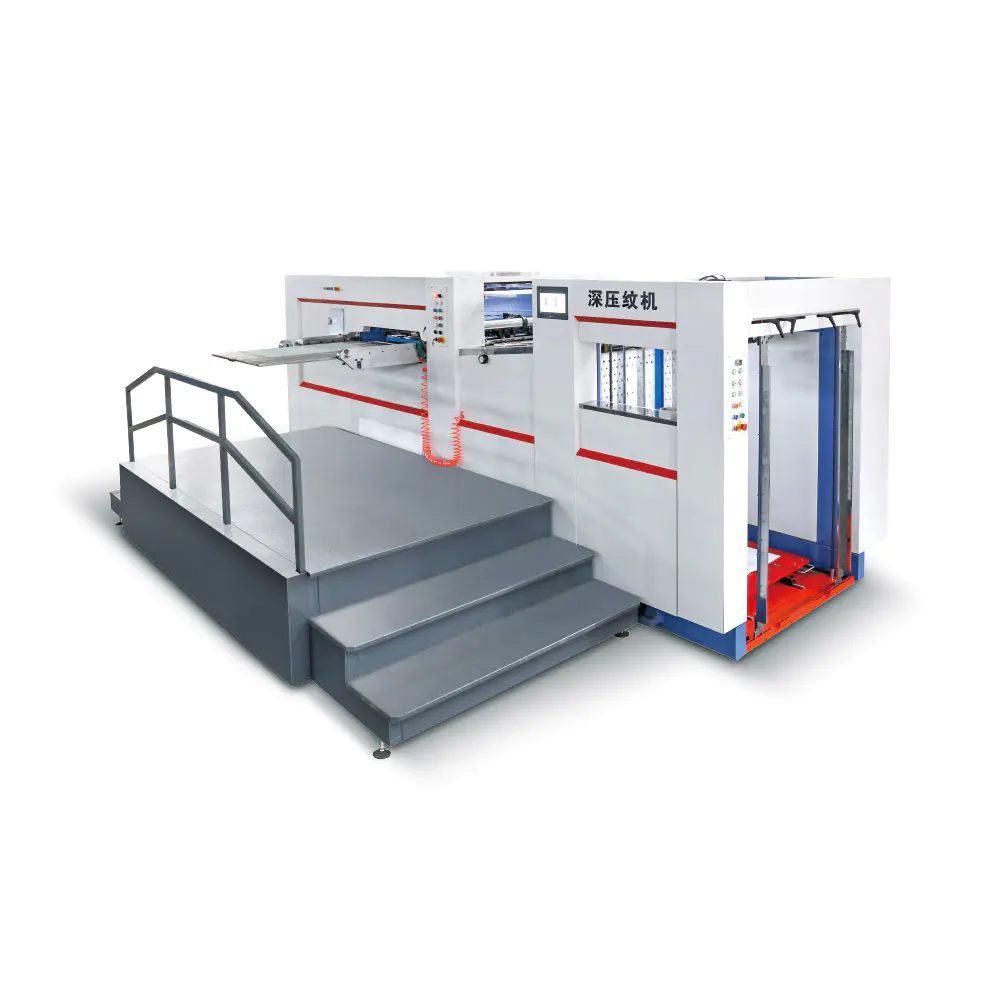What are the key mechanical components and subsystems in die cutting embossing machines
Die cutting embossing machines are complex systems that consist of various mechanical components and subsystems working together to perform precise cutting, shaping, and embossing operations on materials such as paper, cardboard, plastics, and foils. Here are the key mechanical components and subsystems commonly found in die cutting and embossing machines:
Frame and Structure:
Frame: Provides structural support and rigidity to the machine, ensuring stability during operation.
Baseplate: Forms the foundation for mounting the die cutting and embossing components.
Guide Rails: Maintain the alignment and movement of moving parts, such as the cutting head or embossing rollers.
Cutting Mechanism:
Cutting Head: Houses the cutting tools, such as dies or blades, and applies pressure to the material to perform cutting operations.
Dies or Cutting Tools: Tooling components that are custom-designed to cut specific shapes or patterns in the material.
Pressure System: Hydraulic, pneumatic, or mechanical system that applies force to the cutting head to ensure precise cutting.

Embossing Mechanism:
Embossing Rollers: Cylindrical rollers with raised patterns or designs that impart texture or raised elements onto the material.
Pressure System: Similar to the cutting mechanism, a pressure system applies force to the embossing rollers to transfer the desired pattern onto the material.
Heating Elements (optional): In some cases, heating elements may be incorporated into the embossing rollers to facilitate heat embossing.
Feeding and Delivery System:
Feeding Unit: Guides the material into the machine and positions it accurately for cutting or embossing.
Conveyor Belts: Transport the material through the machine at a consistent speed.
Registration System: Ensures precise alignment of the material with the cutting or embossing tools.
Delivery Tray: Collects the finished products as they are discharged from the machine.
Control System:
Control Panel: Interface for operators to input commands, adjust settings, and monitor machine operation.
PLC (Programmable Logic Controller): Controls the sequence of operations, regulates machine parameters, and coordinates the movements of mechanical components.
Sensors: Detect position, speed, and other relevant parameters to provide feedback to the control system for accurate operation.
Safety Devices: Emergency stop buttons, interlocks, and guards to ensure operator safety during machine operation.
Drive System:
Motors: Electric motors drive the movement of various components, such as the cutting head, embossing rollers, and conveyor belts.
Transmission System: Transfers motion from the motors to the mechanical components using belts, gears, or other transmission elements.
Linear Actuators: Convert rotary motion into linear motion to control the movement of the cutting head or embossing rollers.
Lubrication and Cooling System:
Lubrication System: Supplies lubricants to moving parts to reduce friction and wear, ensuring smooth operation and extending component lifespan.
Cooling System (optional): In high-speed or high-volume operations, cooling systems may be employed to dissipate heat generated during cutting or embossing processes, preventing overheating and maintaining performance.
Waste Management System:
Waste Chute or Conveyor: Directs scrap material or waste generated during cutting and embossing operations to a designated collection area for disposal or recycling.
Trim Removal System: Removes excess material trimmings from the cutting area to prevent interference with machine operation and ensure clean cuts.
These key mechanical components and subsystems form the foundation of die cutting embossing machines, enabling precise and efficient processing of materials for various applications such as packaging, labeling, and decorative embellishments. Each component plays a vital role in ensuring the reliability, accuracy, and performance of the machine, while advancements in technology continue to drive innovation and improvement in the die cutting and embossing industry.
of interest


 中文简体
中文简体 Español
Español

















